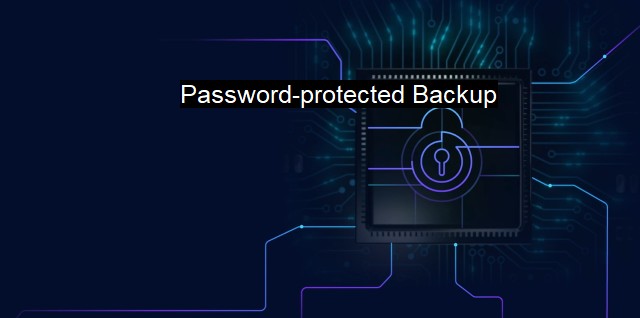What is Password-protected Backup?
Maximizing Cybersecurity Practices with Password-Protected Backups: A Critical Defense Against Malicious Attacks
A "password-protected backup" is a term that originates from the domains of cybersecurity and antivirus, referring to an encryption method employed to safeguard valuable data and information while performing data backup. The purpose is to provide added security that safeguards the stored data from unauthorized access, thereby significantly enhancing its overall protection.Creating backup files is an essential function in information technology (IT), offering a fail-safe against potential IT failures, hardware and software damage, or malicious cyber threats. In effect, backup files act as an insurance policy, retrieving valuable data even after its original location has been compromised or destroyed.
Password protection in backups works through an encryption process. This procedure transforms the original files, which are readable and editable, into coded versions. To convert these files back to their original format, known as decryption, a specific password created during the encryption phase is necessary. This password represents a digital key to unlock the encryption settings that were initially applied.
In the context of general backup architecture, it could either be a whole system backup or an individual data file backup. During a system backup, every file, setting, and software program on a computer is replicated and stored in an external source. Meanwhile, a data file backup only safeguards specific files, including documents, spreadsheets, multimedia files, emails, and similar items. Irrespective of the backup type, password protection delivers a robust shield to keep your data safe from cyber threats.
In today’s digitally interconnected world where cyberattacks are not just common but are also increasingly sophisticated, it’s more necessary than ever to protect backups with strong passwords. High-end encryption algorithms are used to provide strong protection to the backup data. According to security best practices, passwords should be long, intricate, and unique, combining letters, numbers, and special characters to mitigate the risk of being easily cracked.
Contrary to what might be expected, the major risk to password-protected backups is not an external hacker, but rather internal threats and human errors. Therefore, companies regularly emphasize the importance of adhering to password protection protocols and inform their employees about the potential ramifications if these procedures are not followed.
Often, creating and maintaining password-protected backups support compliance with regulations that mandate businesses to protect sensitive consumer data and information. Protecting these backups involves generating and storing passwords in a secure manner, changing them periodically, and limiting access to these codes to only authorized personnel.
Backups are usually made on physical devices such as an external hard disk or a secure online platform known as a cloud backup. In the latter case, data is stored on the server provided by a third-party cloud service provider and can be accessed from anywhere at any time, given the correct credentials. These passwords are then fortified with encryption, presenting another layer of protection for the backup data.
Importantly, backup verification also becomes crucial in such situations to ensure that data can be readily and accurately recovered in times of need. This task is instrumental in confirming that the password protection feature is intact, performing as expected, and the backups can be decrypted without problems.
Password-protected backup is a cybersecurity measure that employs encryption and a unique password to prevent unauthorized access to data backups. The process is a pivotal step in securing sensitive or valuable data against potential threats, contributing greatly to an organization's comprehensive defense strategy against cyber attacks. While basic password protection provides a certain level of safety, it remains the user’s responsibility to ensure that their password is strong and kept a secret to leverage its full protective capabilities effectively.

Password-protected Backup FAQs
What is a password-protected backup?
A password-protected backup is a backup that is encrypted with a password to protect its data from unauthorized access. It is a security measure to ensure that the backup data remains safe and confidential.Why is it important to have a password-protected backup?
Having a password-protected backup is important because it ensures that your data remains secure and inaccessible to unauthorized users. In case of a security breach, a password-protected backup would prevent hackers from gaining access to sensitive information, thereby reducing the risk of data theft and loss.What are the best practices for creating a password-protected backup?
The best practices for creating a password-protected backup includes choosing a strong password that is difficult to crack, not sharing the password with anyone, using a reliable backup tool that supports encryption, and regularly updating the password to enhance its security.What should I do if I forget the password to my password-protected backup?
If you forget the password to your password-protected backup, you may not be able to access the data stored in it. In such a case, you can try using password recovery tools or seek the help of a cybersecurity expert to retrieve the password. However, if the password recovery attempts fail, you may have to create a new backup with a new password.| | A | | | B | | | C | | | D | | | E | | | F | | | G | | | H | | | I | | | J | | | K | | | L | | | M | |
| | N | | | O | | | P | | | Q | | | R | | | S | | | T | | | U | | | V | | | W | | | X | | | Y | | | Z | |
| | 1 | | | 2 | | | 3 | | | 4 | | | 7 | | | 8 | | |||||||